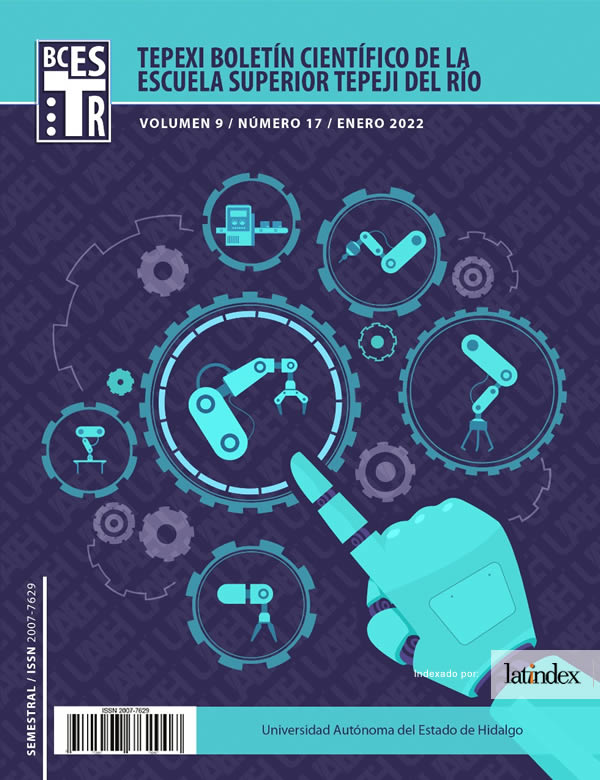Cultural expressions of Tepeji del Río and San Ildefonso Chantepec
Abstract
The objective of the work has the importance of giving value to indigenous peoples by presenting their cultural expressions and so contributing to stop discrimination and marginalization through their knowledge. After the Spanish conquest, regional development had its main economic activity in the exploitation of mines, which motivated the establishment of towns and farms that benefited from the exploitation of precious metals, the subsoil, the use of Henequen and the extraction of the pulque.
At the time of the conquest, it was intended to build a "republic of Indians" to preserve, on the one hand, the indigenous cultural elements that were not contrary to Christian precepts, and on the other, incorporate the new religious contents into the daily life of your new membership. To carry out this objective, they gathered the dispersed natives in the depths of the mountains and the almost impregnable caves to form towns. In the evangelization stage, the Augustinians founded hospitals annexed to their convents and took advantage of the knowledge of pre-Hispanic herbalism, applied occupational therapy that turned their faithful into excellent artisans and participated in the construction of churches and convents, and they also built schools for children, groups of choirs and musicians for religious services, Tepeji del Río Hidalgo and San Ildefonso Chantepec, community of Tepeji were no exception.
Downloads
References
Giménez Gilberto, Montiel (2005). Teoría y análisis de la cultura. CONACULTA. ICOCULT. México.
Hofstede, Geert, "Culture and Organizations”, International Studies of Management & Organization, vol. 10 (4), pp. 1541, 1980
Inglehart, R., Basáñez, M. y Alejandro Moreno (1998). Human Values and Beliefs. A Cross-cultural Sourcebook: Political, Religious, Sexual and Economic Norms in 43 Societies: Findings from the 1990-1993 World Values Survey,The University of Michigan Press, Ann Arbor (Michigan).
Clarke, Irvine Ill, y Kathleen Shirley Micken, "An Exploratory Cross-cultural Analysis of the Values of Materialism",Journal of International Consumer Marketing,vol. 14 (4), pp. 65-89, 2002.
Edukativos (2008). Edukativos. Apuntes para Universitarios. Disponible en ¿Qué es la Cultura? – Apuntes para universitarios (edukativos.com)
De Alva, F. (1975). Obras Históricas de Fernando de Alva Ixtlilxóchitl, México. UNAM
Catedrales e Iglesias (2012). Parroquia San Francisco de asís, Tepeji del Río. Disponible en http://www.catedraleseiglesias.com
Iglesia, Historia y Sociedad (2011). Iglesia Historia y Sociedad, disponible en https://www.elindependientedehidalgo.com.mx/hemeroteca/2011/10/36266
Etnias (2018). Características Otomí. Disponible en Características Otomí | Etnias.
El Pulque (2018). Acambaytour. Disponible en EL-PULQUE.pdf (acambaytour.com)
Herrera, José (2015). Organización y mundos de vida en San Ildefonso Chantepec, Tepeji del Río, Hidalgo. Universidad Autónoma Metropolitana-Xochimilco. Serie Mundos Rurales.
Fournier, P. (2001). “Gigantes, enanos y alfareros: mito y cosmovisión mesoamericanas entre los Hñähñü de la región de Tula, Hidalgo” Dimensión Antropológica Americana 21, año 8 (enero-abril): 71-84.
González, José (2002). Fuerza y sentido. El catolicismo popular al comienzo del siglo XXI. México: Dabar.
Galanier, Jacques (1990). La mitad del mundo, cuerpo y cosmos en los rituales otomíes. México: Centro de estudios mexicanos y centroamericanos/ INI/ UNAM
Rivera Cusicanqui, Silvia (1990). “El potencial epistemológico y teórico de la historia oral: de la lógica instrumental a la descolonización de la historia”. Temas Sociales 11: 49-75.
Atlas de los Pueblos Indígenas de México (2021). Atlas de los Pueblos indígenas en México disponible en http://atlas.inpi.gob.mx/otomies-etnografia
Calva, R. Adela (2008). Alas a la palabra. Ra hua ra hiä. México: Consejo Nacional para la Cultura y las Artes/PACMYC/CAPREPH.












